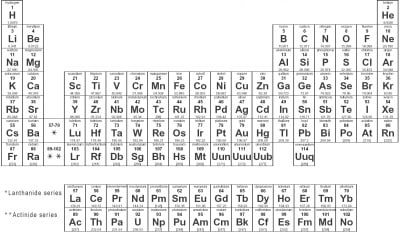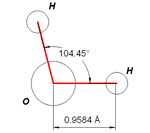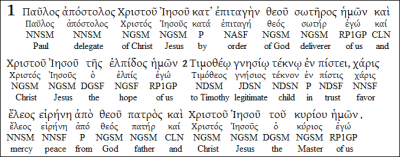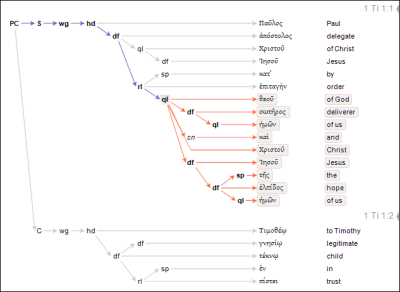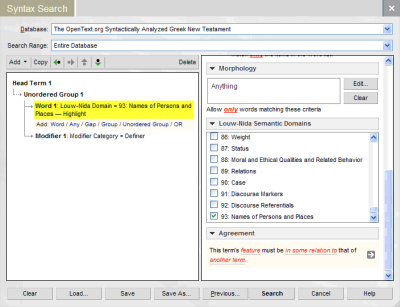Anyone who has taken a science class has likely had an introduction to the basic concept of an atom (the smallest particle still holding the properties of an element). This person also likely has an understanding that molecules are built up of atoms.
This is all loosely speaking, of course—serious scientists would differ with my imprecise descriptions and use of these terms. This is why we have a periodic table of the elements. The table visually represents the basic ingredients of what I will loosely call “stuff”.
The periodic table of elements
(courtesy http://www.bpc.edu/mathscience/chemistry/images/periodic_table_of_elements.jpg)
Thus atoms of hydrogen (H) are different from atoms of oxygen (O). This is well and good; these basic elements that make up “stuff” need to be kept separate and properly defined.
However, life is not so neat. Outside of a science lab, welding shop or hospital, we rarely concern ourselves with pure elements. We concern ourselves with molecules, like the ever-popular H20; two atoms of hydrogen combined with one atom of oxygen—better known as “water”.
This same sort of relationship exists in grammar. Consider words and information about words (known as “morphology”) are the atoms. And this sort of information—definition, part of speech, etc.—is very helpful.
Here each word (or “atom”) has information associated with it such as a dictionary form (thus a meaning), morphological information (like part of speech) and an English-language literal translation (or a “gloss”).
This information allows one to attempt to deduce further information about groups of words, but relationships are only implied and not expressly denoted. That is, while one may know that the και at the end of line one above functions to join things together (based on morphology as a conjunction that is a “logical connective”), and while reading the text one can intuit what is connected (“God our Saviour” and “Christ Jesus our hope”, based on common noun cases joined by the conjunction), these things are not explicitly marked. They are free-floating atoms that happen to have proximity, their underlying relationship has not been quantified. These relationships (molecules) can be guessed at using atom-level data and proximity, but they cannot be specifically known.
A syntactic annotation makes molecules (word groups, phrases, clauses) of the atoms that are words. The graph below shows that “God our Saviour” and “Jesus Christ our hope” are the items connected by και.
This is why we think syntax (more specifically, syntactic annotations) is so important. Not because it’s cool (though it is), but because it puts together the individual words (atoms) into more meaningful structures (molecules). It lets us talk about “water” instead of talking about “an atom of hydrogen, followed by an atom of oxygen, followed by an atom of hydrogen”.
Syntax also allows for the combination of molecules, as seen in the above syntax graph. There are relationships between words. So Παυλος (“Paul”) is a “head term word” that is modified (here “defined”) by the whole phrase αποστολος Χριστου Ιησου κατ’ επιταγην θεου σωτηρος ημων και Χριστου Ιησου της ελπιδος ημων (“an apostle of Christ Jesus according to the will of God our Saviour and Christ Jesus our hope”). The relationship between the word and the phrase is one of “definition”. In this case, a new “molecule” is created by adding an “atom” (Παυλος) to an existing molecule (the “definer”) and the relationship that creates the new molecule is specified.
That “definer” consists of two parts, or molecules: the “qualifier” Χριστου Ιησου (“of Christ Jesus”) and the “relator” κατ’ επιταγην θεου σωτηρος ημων και Χριστου Ιησου της ελπιδος ημων (“according to the will of God our Saviour and Christ Jesus our hope”). Both of these molecules further modify αποστολος (“apostle”), telling who Paul serves and by what authority he serves. And this whole structure, the definer, clarifies Paul’s apostleship.
Additionally, because these “molecular” relationships have been specified across the whole of the text, these relationships may now be searched. To use the present example of Παυλος modified by a definer, we can search for where words that are “Names of Persons or Places” (Louw-Nida domain 93, one piece of information assigned at the “atom” level) are modified by definers.
To do this, a search dialog that allows one to visually represent syntactic structure is used to create a query.
This query specifies that a head term must contain a word (or “atom”) that specifies it is within Louw-Nida domain 93, it must also contain a modifier (or “molecule”) that is a definer. This search, when run, locates 473 instances of the syntactic structure in the New Testament. An example search hit is Mt 27.37, which has Ιησους ο βασιλευς των Ιουδαιων (“Jesus, the King of the Jews”) where Ιησους is the head term word (or atom) and ο βασιλευς των Ιουδαιων is the definer (or molecule).
Summary
Much like molecules are groups of atoms that allow us to talk about “water”, “sugar” and “gasoline” without needing to specify the molecular make-up, a syntactic annotation allows one to talk about “subjects”, “predicators” and “complements” without needing to approximate contents.
The syntactic annotations do the analysis, building up higher-level structures from the “atomic” level of word data (word, morphology, lemma, etc.). These structures are useful by themselves in that they document how a particular syntactic approach or philosophy has analyzed the structure of the text. They are further useful in that they provide for higher-level combinations of things to be queried. Rather than approximating all of the ways that words (atoms) may potentially combine to form the molecule “subject”, one simply specifies “subject” to bound one’s search to such structures.
In this way, the text can be read, queried and analyzed at a higher level (clauses, phrases, etc.) without sacrificing the necessary and useful information at the foundational word level.

